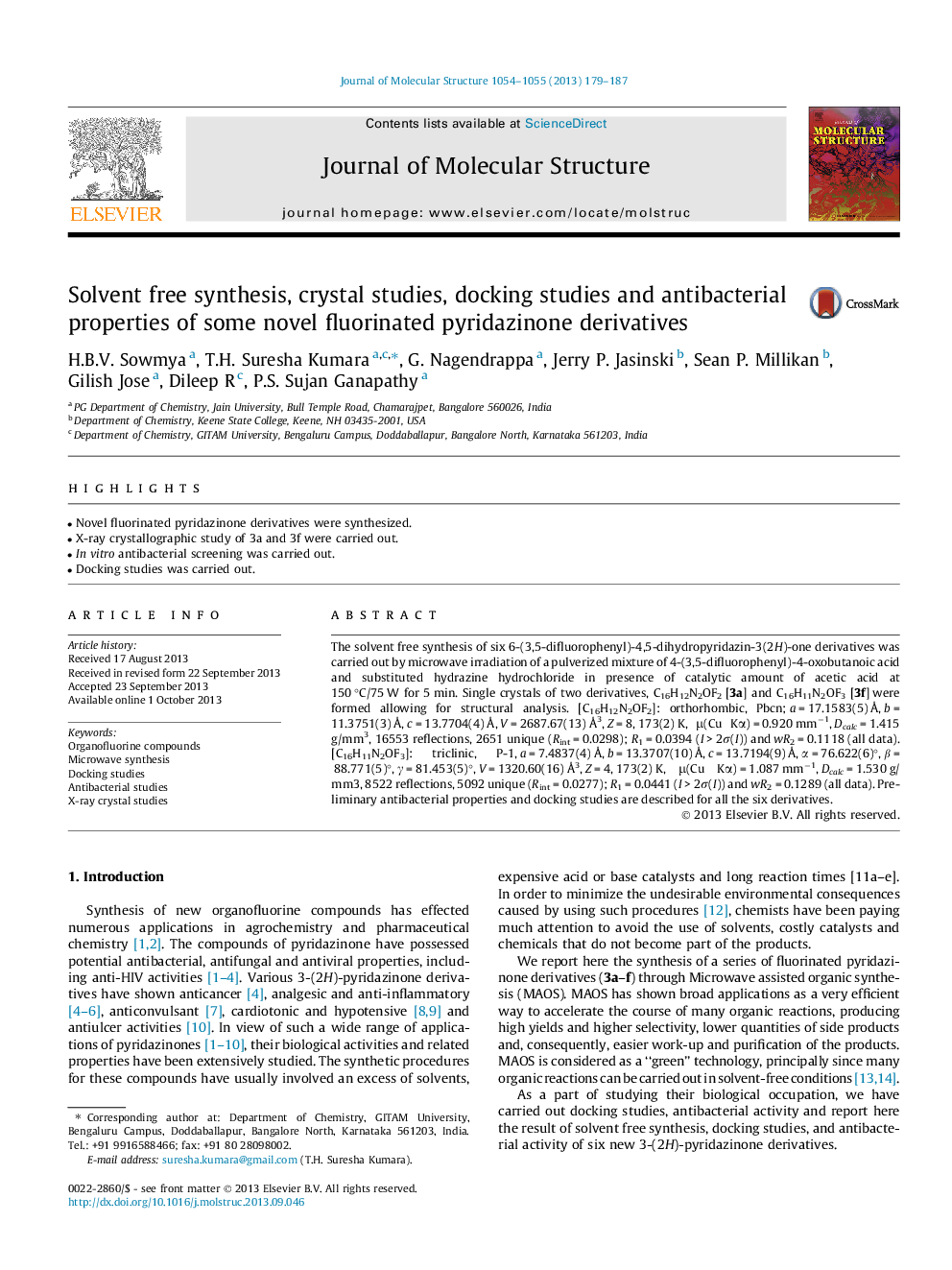| Article ID | Journal | Published Year | Pages | File Type |
|---|---|---|---|---|
| 1405864 | Journal of Molecular Structure | 2013 | 9 Pages |
Abstract
The solvent free synthesis of six 6-(3,5-difluorophenyl)-4,5-dihydropyridazin-3(2H)-one derivatives was carried out by microwave irradiation of a pulverized mixture of 4-(3,5-difluorophenyl)-4-oxobutanoic acid and substituted hydrazine hydrochloride in presence of catalytic amount of acetic acid at 150 °C/75 W for 5 min. Single crystals of two derivatives, C16H12N2OF2 [3a] and C16H11N2OF3 [3f] were formed allowing for structural analysis. [C16H12N2OF2]: orthorhombic, Pbcn; a = 17.1583(5) Ã
, b = 11.3751(3) Ã
, c = 13.7704(4) Ã
, V = 2687.67(13) Ã
3, Z = 8, 173(2) K, μ(Cu Kα) = 0.920 mmâ1, Dcalc = 1.415 g/mm3, 16553 reflections, 2651 unique (Rint = 0.0298); R1 = 0.0394 (I > 2Ï(I)) and wR2 = 0.1118 (all data). [C16H11N2OF3]: triclinic, P-1, a = 7.4837(4) Ã
, b = 13.3707(10) Ã
, c = 13.7194(9) Ã
, α = 76.622(6)°, β = 88.771(5)°, γ = 81.453(5)°, V = 1320.60(16) Ã
3, Z = 4, 173(2) K, μ(Cu Kα) = 1.087 mmâ1, Dcalc = 1.530 g/mm3, 8522 reflections, 5092 unique (Rint = 0.0277); R1 = 0.0441 (I > 2Ï(I)) and wR2 = 0.1289 (all data). Preliminary antibacterial properties and docking studies are described for all the six derivatives.
Related Topics
Physical Sciences and Engineering
Chemistry
Organic Chemistry
Authors
H.B.V. Sowmya, T.H. Suresha Kumara, G. Nagendrappa, Jerry P. Jasinski, Sean P. Millikan, Gilish Jose, Dileep R, P.S. Sujan Ganapathy,
